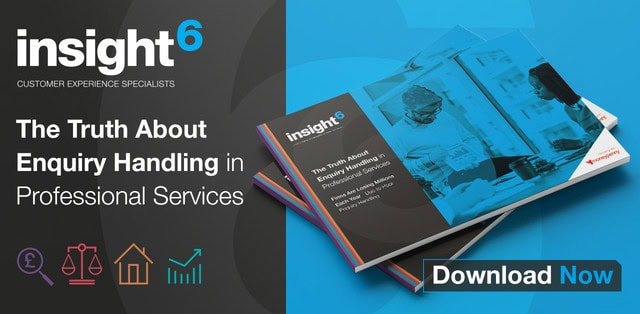How much data do you have about customer experience compared to the volume of data you have about the financial performance of your business?
This question is interesting because the finances represent the outcome of the state of the customer experience in most businesses and yet often, more is done to look after the finances than the customer experience! How can that make sense?
Our business is totally focused on facilitating our clients to improve their customer experience.
Over 25 years we have mastered and learnt from the specialist work we do with our clients on how to make an impact and improve customer experience.
THE most important aspect of our work is to measure customer experience. The reason measurement is a vital part of any customer experience transformation is because you need to know where you are before you start. All movement and change in life requires that you identify where you are and where you want to go; this process allows you to have a clear understanding of the gap between the two and what you need to do to get where you want to go.
And if you are still not convinced why you should measure the experience your customers have in your business, how about the old Peter Drucker quote “what gets measured gets done.”
So how do you measure something as individual, personal and emotional as experience?
An objective quality measurement tool that identifies where you are with customer experience, how far you have come and what you need to do to improve will enable you to focus on actions and not concern yourself with ‘how are we doing’ circular questions.
What we witness with clients, in the absence of an objective measurement tool is how easy it is to fall victim to confusion and frustration that results from listening to the subjective opinions of the last colleague you asked of ‘how you are doing?’.
There are a number of ways you can measure customer experience and all of them involve simply asking questions of your customers and your team, outlined below are our top tips to make it work:
1. Where do I start?
The simplest way to create questions that are relevant and help you understand how you are performing is to start with a customer journey map of your business (see last month’s blog). In a nutshell, map the questions around the customer journey map – the map identifies each of the customer touchpoints in your business which is what you need to measure.
2. What questions shall I ask?
In order to get to the heart of the customer experience the questions need to focus on how people feel at each of the touchpoints in the customer journey (https://www.insight6.com/what-is-customer-journey-map/.)
Skilful questions reflect that feelings follow thoughts, so it is easier for a customer to answer a question about what happened before they answer how it made them feel. Understanding consequences of circumstances on behaviour and feelings exposes the priority of what might appear to be perceived as a minor issue in a business to a full-scale burning issue.
For example, measuring the customer experience at a restaurant we could start the questions at the booking touchpoint and ask, “what happened when you booked a table at the restaurant y?”
Customer: “The online booking system would not accept my time and so I had to phone the restaurant”Question: “How did that make you feel at the time?”
Customer: “Frustrated and annoyed – I was between meetings and didn’t have much time AND I had promised my wife I would book for that weekend”
Question: “What did you do as a result of this experience”
Customer: “I phoned the restaurant and they were engaged and so I booked restaurant x where it took less than a minute to book online”
Question: “How did this booking experience makes you feel about restaurant y?”
Customer: “We love the food at restaurant y and we still will continue to go there but nowhere near as much as the other restaurants we visit because the others are organised, make it easy for me to book and you know what the food is just as good – everyone I know has had the same problem with booking at restaurant y”
The above is a real-life example of a client’s experience and demonstrates at just one customer touchpoint how much insight can illuminate the consequences of a poor customer experience.
In this example, it is frustrating as a business owner to see that sometimes the customer’s experience of the human element of the business is great and it is the technology, that is intended to increase efficiencies, negatively impacts the overall customer experience. The identified weakness at the booking touchpoint is a threat to the sustainability of the business that needs to be addressed. ‘Wrapping technology with love’ is a challenge but something that every business in the 21st Century has to make a priority in order to create a real customer experience transformation.
3. How do I know what good looks like?
Net Promoter Score (NPS) is one of the most tried and tested methods of measuring a customer’s experience. Through NPS you can understand the likelihood that a customer will recommend your product and service to someone in their community e.g. friend, colleague or family member. We use the NPS question in all our methodologies to gauge how people feel about customer experience. With over 1000 clients we can therefore benchmark your performance against others in your sector or industry. What we have observed in our work is NPS will increase by x% as a result of starting a customer experience transformation and this typically translates to an impact on sales.
4. Who should I ask?
Whatever your business, not all customers perceive you in the same way. For example, you can have a ‘regular’ customer, a ‘lapsed’ customer that you have not seen for a while, and a ‘non-user’ customer that you have never seen but uses the competition. Asking all of the different types of customers how they experience your business is important to understand the different perspectives. To ensure all the hard work of collecting the data from customers is used to create the maximum impact in the business, the careful analysis of the answers needs to be carried out. This will allow you to differentiate between the needs and experiences for each of the customer groups. As a result, a clear action plan can be prioritised with the intention of removing the most customer friction in the business. Make it your priority to remove all the reasons why customers do not use you!
Asking the team the questions about the customer touchpoints will also create a deeper level of insight that will help you identify the gaps in perception between what the team feels is the experience and how customer feels about the experience. We use this process to enable you to create a training programme to plug the gaps
5. How should I ask?
There are four key methods we have perfected over 20 years to use and measure customer experience.
1. Online and face to face surveys2. Telephone and face to face interviews
3. Focus and Listening groups
4. Customer Experience Reviews
Each method or combination of methods will create a rich pool of data that will allow you to focus on the areas that need to improve and continue to do all the things that deliver a great customer experience.
6. Why should I bother?
We are proud of the relationships that we have with our clients that result in us metaphorically ‘going on the customer experience journey’ with them. A key part of delivering consistently improving customer experience is to put in place a continual process that needs fresh and insightful challenges to stay ahead of the competition.
As Lucy Knight in Dorset, Bath and Wiltshire says “we were aware that customers were suffering from survey fatigue as the questions were not engaging and there were too many questions being asked. We have streamlined the surveys and the questions and as a result we have increased the number of responses and quality of the information”
In the words of our Customer Experience Consultant Phil Heaven “One of my most challenging projects was working with a multiple site Holiday Park, over four years we conducted a continued programme of team training, customer experience reviews which resulted in x increase in scores across the board, a complete change in job roles, recruitment and induction processes, a new bonus scheme – all of this aimed at customer experience transformation – the results are a total culture change”
The work that we carry out with all of our clients is vital to delivering the customer experience strategy. Our role is to measure that the team displays empathy and understanding as part of all their interactions and this is included as part of our measurement programme. We sensitively measure and report through our customer experience reviews how the team are doing so that they can learn from each other and build on their experiences and knowledge over time.
If you would like to know more about how customer experience measurement can help your business, please call us for a customer experience audit.



0 Comments